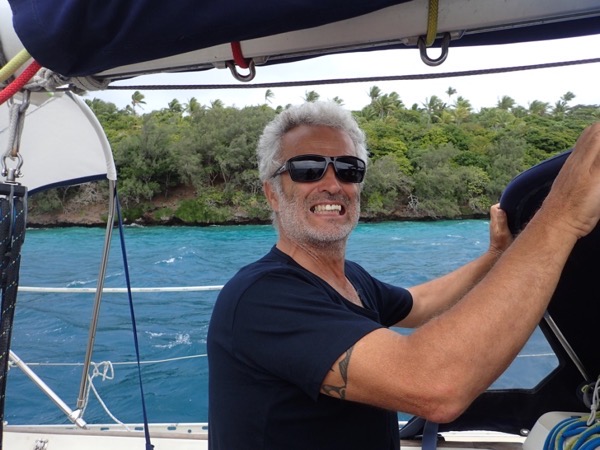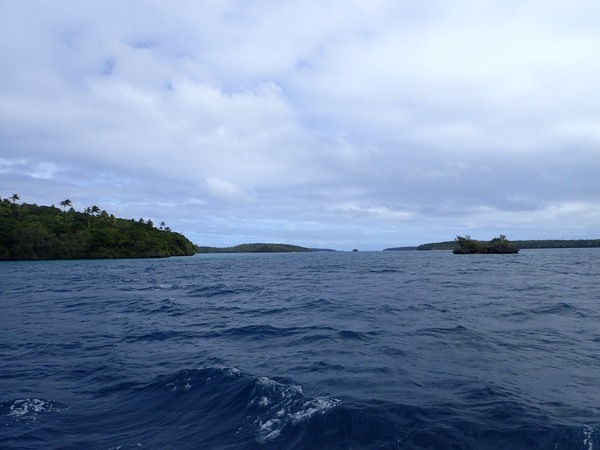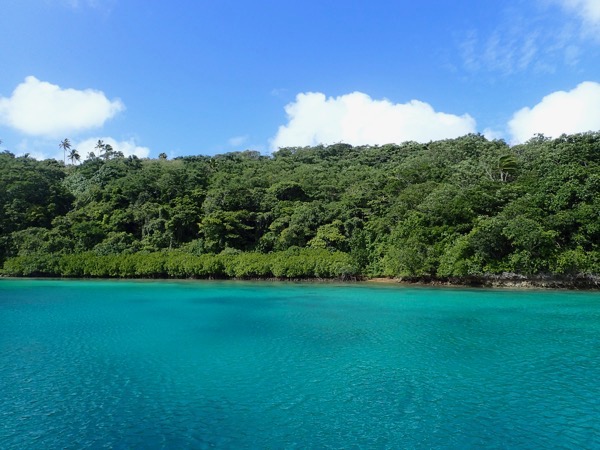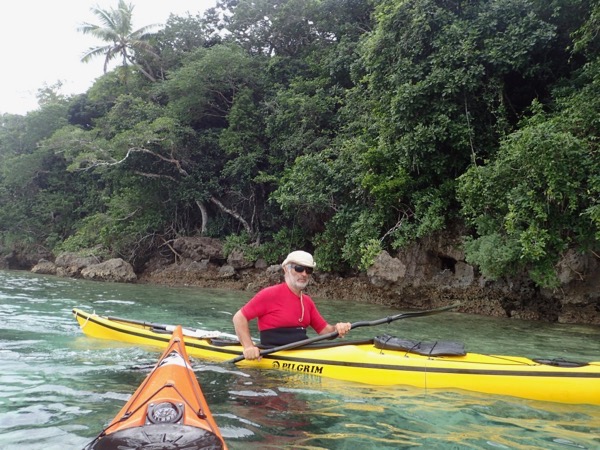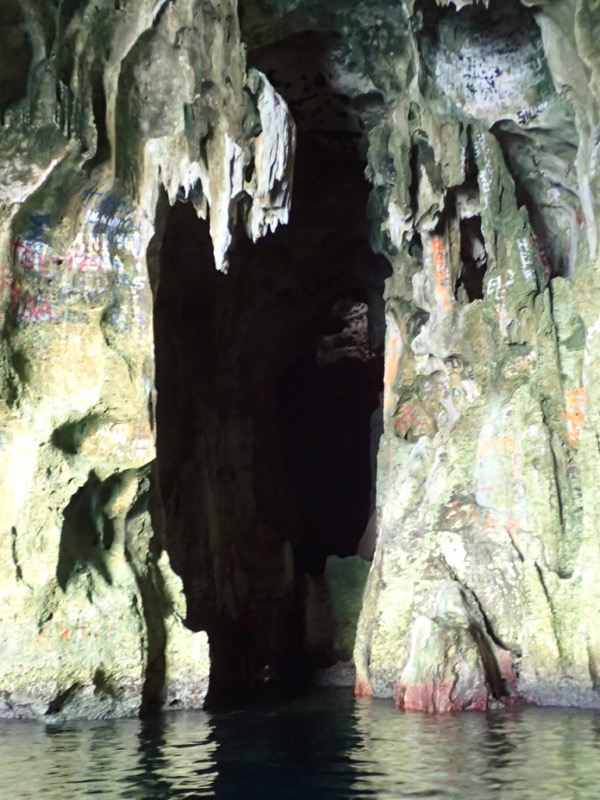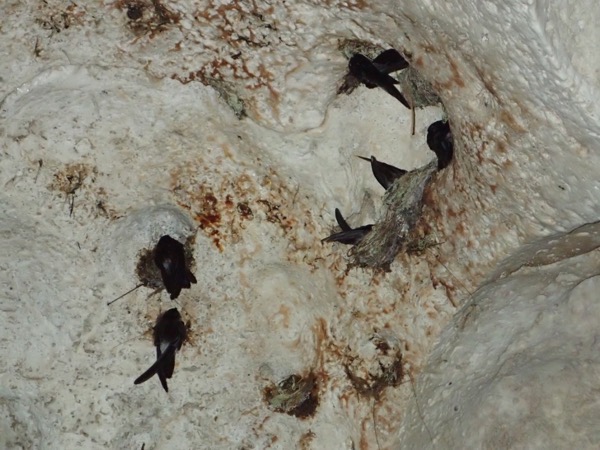Grey days in Vava’u

18:41.8S 173:59.9W The day we visited the botanical gardens, we’d been lucky, the cloud had lifted and the strong tropical sunshine had dried up the mist, but since then it has been dark and gloomy. Still in the Vava’u Group, we sailed down to Vakaeitu Island, otherwise known as anchorage 16. The snorkelling nearby is reputed excellent but the weather remained grey. The best place to snorkel is at the end of the bay, over the reef, where it drops off into the deep. It was too far to row Arnie (the dinghy) and a little awkward in the kayak as I would have to get over the breaking reef, so I inflated the surf board and body-boarded / walked over to have a look. The offshore wind was funnelling through the gap between the islands and raising a nasty chop. The underwater visibility would be reduced but still I pressed on. I started crossing the reef but a breaking wave knocked me down, I dropped my fins and scratched my leg on coral. It was time to go home.
Franco, a little tense so close to the reefs
Sailing towards anchorage 16 The forecast was for the wind to go strong and north-easterly, so we upped anchor and headed over to Pangaimotu Island (anchorage 10). As we approached, it looked like we had the cove to ourselves, until we got around the headland, then a mast appeared, then another and another. We’d moved there to find shelter from the wind, and so had everyone else. We’d met several of the boats previously, made friends with a couple more and it turned into a fun and sociable few days. Although the weather remained poor, snorkelling revealed fish and creatures we hadn’t met before, including blue starfish and sea worms the size of anacondas. The branches of the trees on the shore hung heavy with a large population of flying foxes. Day and night they flapped around, screeching to each other, and we watched enthralled. To many Tongans, they are a pest, stealing the fruit before it is ripe enough to pick.
A brief moment of sunshine in anchorage 10 The Vava’u tourist circuit includes a couple of caves; Swallows’ and Mariner’s, and most people visit them as part of a whale watching trip. They were only a few miles from our anchorage so we went by kayak. A brisk wind helped us on our way, it would be a tough paddle back.
The jungle starts at the sea We found a cleft in the rock and thought we had arrived at Swallows’ Cave. It was just a little further round. We were shocked to find the entrance covered in graffiti. Humans seem to have an urge to mark where they have been, like a dog pissing on a wall?
Cleft in the rock
Swallows’ Cave Franco let me go first. Armed with our new dive torch, I jumped out of my kayak and swam to the rocks. The torch came on as soon as I hit the water. “Wow, an automatic switch!” I thought. It turned out our new dive torch wasn’t waterproof and the water had connected the batteries! There was no longer any way of turning it off other than taking the batteries out. As I explored the back chambers, I thought I saw bats flying around. Whatever it was, it was using clicking sounds to echo locate. Then I remembered the name of the cave, they were white-rumped swiftlets (Aerodramus spodiopygius). Franco went next.
The swiftlets nesting in ‘Swallows’ Cave The second cave, Mariner’s, was further away. We paddled across the gap between Kapa Island and Nua Papu Island and hoped the wind wouldn’t get any stronger. The cave is named after William Mariner. In 1805, at the age of 15, Mariner went to sea on the privateer Port-au-Prince. After many months at sea, the ship eventually arrived in Tonga. The reception was friendly but on 1 December 1806 the natives attacked the crew and murdered them all save young William. He was made prisoner but the chief took him under his wing. He learnt Tongan and spent four years living in the chief’s household. Eventually he was allowed to return to England on a passing ship. From the water, you cannot see the opening to the cave because it is underwater. To get in, you have to dive down a couple of metres, swim under an underwater rock sill until you emerge into the cave. We rafted up and got ready, we would go one at a time while the other looked after the kayaks. By the time we got our masks and snorkels out of the hatch, we’d been blown five hundred metres off. Next stop Fiji! The wind was too strong, we had no safety margin. It was time to call it a day. The following day we returned to Neiafu in a deluge with the visibility barely further than the bow. The good news is we were able to ‘catch’ seventy litres of rainwater. |
